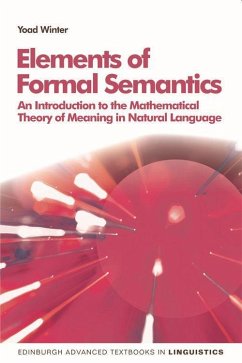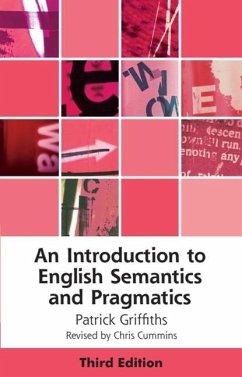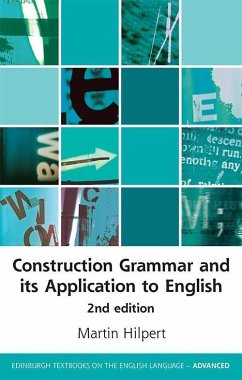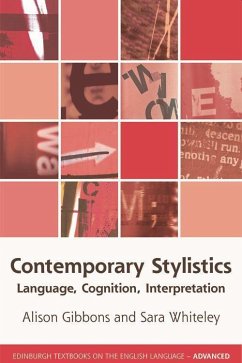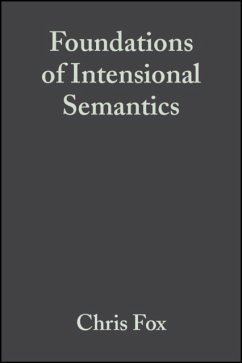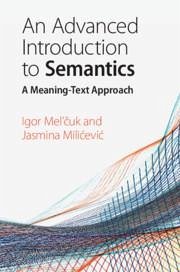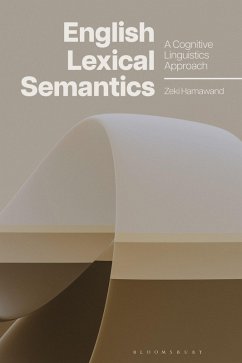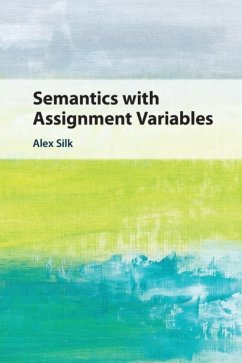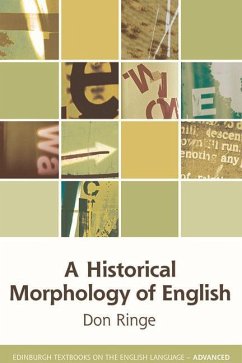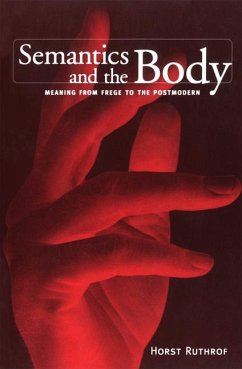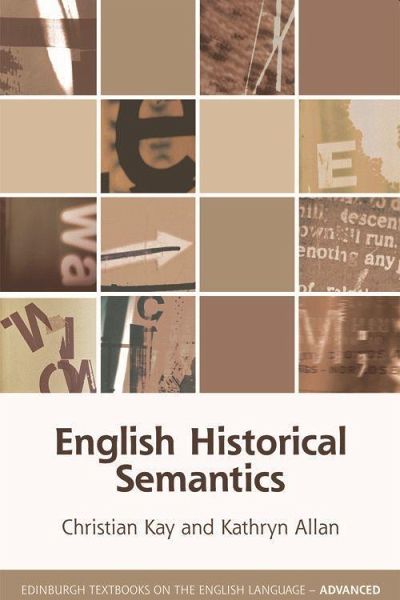
Christian Kay (University of Glasgow Professor of English LanguageKathryn L Allan (University College London Lecturer)
Broschiertes Buch
English Historical Semantics
Versandkostenfrei!
Versandfertig in 2-4 Wochen

PAYBACK Punkte
17 °P sammeln!




This guide gives students a solid grounding in the basic methodology of how to analyse corpus data to study new words entering the language or language change. .
Christian Kay is Professor Emeritus and Honorary Professorial Research Fellow in English Language at the University of Glasgow. She was an editor of the Historical Thesaurus of the Oxford English Dictionary, and A Thesaurus of Old English, and founded the Scottish Corpus of Texts and Speech. She has written on historical semantics and lexicography and contributed to projects on metaphor and semantic annotation based on the Historical Thesaurus of English dataset.
Produktdetails
- Edinburgh Textbooks on the English Language - Advanced
- Verlag: Edinburgh University Press
- Seitenzahl: 224
- Erscheinungstermin: 8. Oktober 2015
- Englisch
- Abmessung: 216mm x 139mm x 17mm
- Gewicht: 298g
- ISBN-13: 9780748644773
- ISBN-10: 0748644776
- Artikelnr.: 40509419
Herstellerkennzeichnung
Libri GmbH
Europaallee 1
36244 Bad Hersfeld
gpsr@libri.de
Für dieses Produkt wurde noch keine Bewertung abgegeben. Wir würden uns sehr freuen, wenn du die erste Bewertung schreibst!
Eine Bewertung schreiben
Eine Bewertung schreiben
Andere Kunden interessierten sich für


